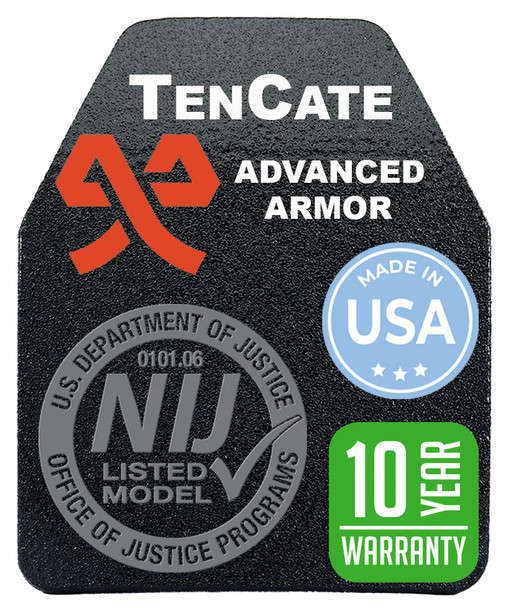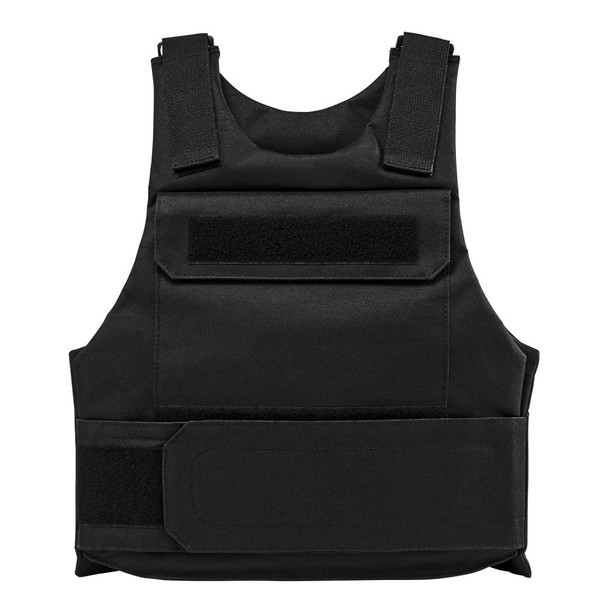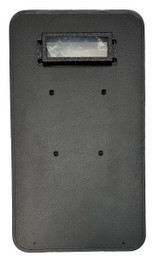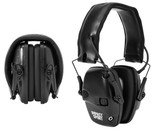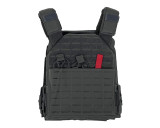Best Body Armor for Civilians
When someone mentions body armor, ordinary civilians will probably be among the last things you’ll think about. Indeed, body armor is for tough military guys, street patrol officers, and bodyguards, isn’t it?
However, in today’s world, staying protected is no more the prerogative of Special Forces and policemen. The sad fact is: we, ordinary people often need as much personal safety as those who swore to serve and to protect. Body armor for civilians is your safety in many extraordinary situations that unfortunately happen way too often sometimes.
In this article we will take a look at the latest civilian body armor trends and offer a range of good body armor suitable for wearing by civilians.
What is body armor for civilians
Technically, armor for civilians is identical to its battle counterpart. It is designed to stop bullet threats and protect the wearer from ballistic damage. However, there are some peculiarities too. For one, civilians are less likely to speed-march fully equipped and then instantly move into action. Hence, as a non-combatant, you probably don’t need a lot of tactical options military body armor offers and don’t need the most advanced protection either. You merely need a comfortable plate carrier and a pair of armor plates to protect your torso.
Nevertheless, all the features of a “big brother” must still be here. So let’s talk about critical armor features you should be aware of before you dive into choosing body armor for yourself or for your loved ones.
Threat levels
All armor is designed to stop certain types of ballistic threats. There is no one-size-fits-all body armor that stops everything. To measure and evaluate the efficiency of each particular armor type and to certify its protection capabilities, the National Institute of Justice developed the threat level standard.
According to the NIJ 0101.06 standard, all threats are divided into several levels from NIJ Level II to NIJ Level IV. However, since 2023 the new NIJ 0101.07 standard was introduced, so we combine the older and the new standard into one sheet, so you could quickly assess the protective capabilities of each armor type.
| Former threat level (NIJ 0101.06) | New threat level (NIJ 0101.07) | Description |
| NIJ Level II | NIJ HG1 | Basic Hand Gun (HG) protection. |
| NIJ Level IIIA | NIJ HG2 | More advanced Hand Gun protection. |
| NIJ Level III | NIJ RF1 | Basic protection from Rifle shots. |
| No | NIJ RF2 | Advanced protection from Rifle shots. |
| NIJ Level IV | NIJ RF3 | The most advanced protection from Rifle AP shots. |
The new RF2 standard is more rigorous, and it uses higher test velocities for the same ammo types, so basically the body armor certified as NIJ 0101.07 offer more contemporary protection. You can read more about the new NIJ RF2 standard in our blog article here.
When it comes to civilian body armor, you probably won’t need the highest levels of protection, such as RF2, RF3 or NIJ Level III or higher. Typical threats civilians usually face are hand guns, so there is no point in buying hard armor sets.
Speaking of which…
What are armor types?
Well, basically there are two types of armor: soft armor and hard armor. Soft armor is made from soft flexible materials. Soft armor plates better fit your body and allow for more agility and maneuverability, while providing somewhat limited ballistic protection. The materials for soft armor are synthetic fibers or hard-density polyethylene.
Hard armor, on the other hand, is made from harder and tougher materials like steel or tough ceramic. These materials offer better protection from serious threats for the cost of higher weight of the armor and reduced mobility of its wearer.
One more type of body armor, which might be of certain interest for civilians is concealed body armor designed for covert wearing underneath clothes. Such armor is thinner, lighter and has lower profile, therefore it is easier to conceal. Apparently, such armor type is demanded by police officers undercover, security guards, and those civilian people who want to remain protected while not making it apparent to everyone around.
Civilian armor materials
Speaking of body armor materials, you should understand that most contemporary body armor plates are a combination of multiple materials. With one possible exception of steel which is an excellent bullet-resistant material by itself (save the weight).
Anyway, here are the most commonly used materials civilian body armor is made from:
Synthetic fibers (Kevlar, Dyneema, Twaron etc.)
Aramid fibers are one of the historically first synthetic fibers. They come under various commercial names, but they share the same concept: thin fibers of extraordinary tear-resistant synthetic material can efficiently absorb the energy of the impact. Woven together, such fibers provide superior bullet resistance.
Aside from strong protection, synthetic fibers have surprisingly low weight, so they are mostly used in soft and lightweight armor.
On the downside of Kevlar and its cousins, these materials can’t stop stabs and are not pike-resistant. Sharp objects simply pin through the armor, so pure Kevlar armor need some additional elements made from other materials to become stab-resistant.
Despite its downsides, synthetic fiber is still one of the most popular materials for soft body armor for civilians.
High molecular weight polyethylene (Spectra etc.)
Modern polyethylene is an extremely tear-resistant polymer material resembling your everyday polyethylene, but much, much tougher. Body armor made from such high-density polyethylene literally encapsulates the projectile within its volume and evenly dissipates the energy of the shot protecting the wearer.
Polyethylene armor for civilians is lightweight. It can even float on the water! But speaking of its efficiency, it can be as high as NIJ Level IV.
There are some drawbacks, however. Usually, high-density polyethylene armor is bulkier than Kevlar. An average armor plate made of PE is notably thicker. This may pose a problem for concealed wearing, so if you are seeking for this type of civilian body armor, you should probably consider other materials.
Steel (AR500 etc.)
Steel is an excellent material renowned for its low price and high protective value. There is a lot of superior steel body armor plates on the market, and we really suggest you to consider this option if you are tight on budget.
On the minus side, steel is heavy, so you have to be ready for this additional weight on your shoulders. Also, steel is prone to fragmentation upon hit, potentially causing secondary damage to your limbs or torso.
Ceramic
Ceramic body armor plates are tougher than steel yet lighter. This means, a ceramic body armor plate of comparable thickness provides better protection. Ceramic materials absorb ballistic damage in a way similar to how modern car bumpers absorb the energy of collision: they deform, shatter, and break to dissipate the kinetic energy of the bullet over larger area.
Modern synthetic ceramic is hard and tough, but fragile (this is planned). This means that ceramic alone just cannot provide efficient protection. That is why practically 100% of ceramic body armor is in fact composite. They have an outer ceramic layers and a backing of other materials, such as steel, fibers, or polyethylene to hold the ceramic layer together and redistribute energy.
Features of body armor for civilians to look for
What to look for if you plan to purchase a body armor for yourself? First of all, you should understand that tactical body armor is designed with real gunfight in mind. Police officers and SWAT have to work in situations where intensive backfire is highly likely, so they must go prepared.
Hence, military and police body armor offers higher protection levels. Moreover, they provide many tactical options to let officers successfully fulfill their jobs. We are talking about MOLLE webbing, radio connectors, watering systems and emergency handles. As a civilian, you don’t need all of those. What you need is to remain protected if you face a shooter while doing your job in a dangerous area or if you’ve found yourself in a wrong time and place. Many journalists, firefighter or paramedics wear body armor when they have to work in military conflict areas.
What you should pay attention to is:
- Low weight. If you weren’t trained in the SEAL prep school, you will have hard times wearing a heavy armor set for hours. Choose lighter soft armor models to retain your stamina.
- Comfort. This is crucial. You don’t want to feel clumsy in your body armor. Make sure it fits perfectly well.
- Easy to put on and take off. While this may seem minor, in fact it must be easy for you to put on the armor on your own and at any time.
- Concealable. If you plan wearing the armor under clothes, look for thin and low profile models for covert wearing. You should also prefer white or nude color of the armor vest to make it invisible under your shirt.
Is it legal for civilians to buy body armor?
Generally, yes. There are no laws that restrict you from buying a personal body armor, whether you are a civilian or not.
Certain types of helmets or special equipment may not be available for sale, but as for body armor, there are no any limitations.
How to choose body armor for civilians
The way you select body armor is simple. First of all, you should consider why you need the body armor in the first place. Well, yes, I know – safety. This is true. But what you really need to assess is the level of potential threats and dangers you might face with. This directly translates into the preferred type of the body armor.
Do you need a personal armor as a part of your otherwise civil job? Or do you need it to shoot at a range? May be you want to feel protected on the streets, but would rather not let everybody around you know that you are wearing armor?
If you are not sure what type of body armor you need, read this article further, or consult a specialist.
Are there alternatives for wearing body armor?
Not all of us are willing to wear full-sized body armor, especially in ordinary life. But you don’t have to neglect your safety, there are other options for you.
- Bullet-resistant backpacks. They look and feel just like any usual backpack. You can even throw in stuff. The difference is an armor plate that protects your back when you wear the backpack as usual. Also, you can take it off and use as a cover, for instance to quickly escape a dangerous place or get instant protection in case of emergency. Such backpacks are also available for kids. This is extremely important provided the today’s situation with school shootings.
- Blankets. Bullet-resistant blankets are also a viable alternative for body armor for civilians. Technically, this is a foldable sheet of bullet-resistant material. You can quickly unfold it to get limited cover for yourself and those nearby.
- Armor plate inserts. You can insert such armor plates to a normal bag, a backpack, or a suitcase. They come in variety of sizes, so you can almost always find one that fits your accessory. Yes, the protection is minimal, but that’s still better than nothing.
- Bullet-resistant jackets. Very similar to what you have seen in the John Wick movie, but bulkier and less cinematic. Such jackets offer front and back protection against handgun rounds. On the plus side, the jacket looks very similar to ordinary clothes. On the minus side, it doesn’t guarantee proper fit of armor plates, so the protection it offers can vary depending on your stance, whether you are running or not etc.
Conclusion
As our life is getting crazier each day, protection from bullet threats becomes a necessity even for those of us who never imagined such a sad scenario in their entire lives. The more important becomes body armor for civilians then. If you consider buying a protective device for you and your family, please don’t hesitate to contact us to receive the most professional assistance in selecting the best option for you.
Recent Posts
-
Understanding Ballistic Shield Ratings and Their Applications
The Trusted Name in Tactical Defense - BattleSteel® When it comes to protecting those who protect us …2025-04-19 -
The Importance of Hearing Protection in Tactical Environments
The Legacy of BattleSteel® BattleSteel® is a trusted name in the world of tactical defense equipment …2025-04-14 -
How to Properly Fit and Wear a Plate Carrier
About BattleSteel and Their Mission BattleSteel is a trusted name in the tactical gear industry, ren …2025-04-11
